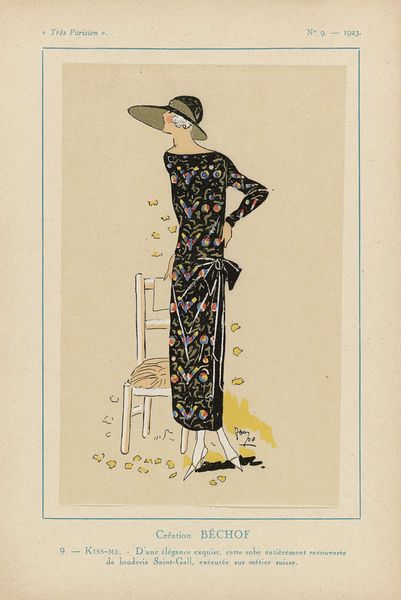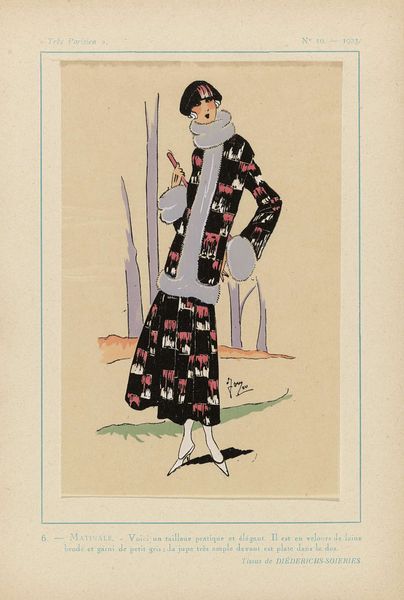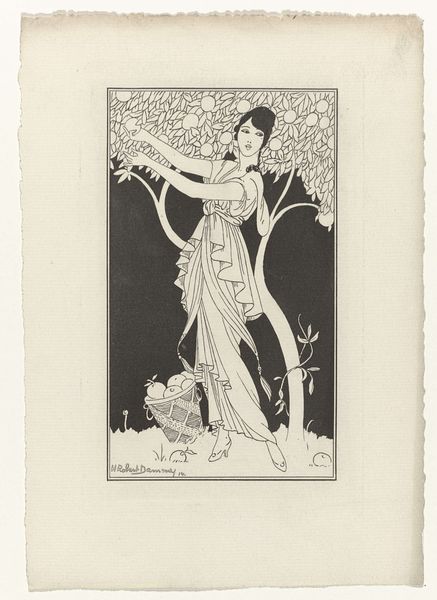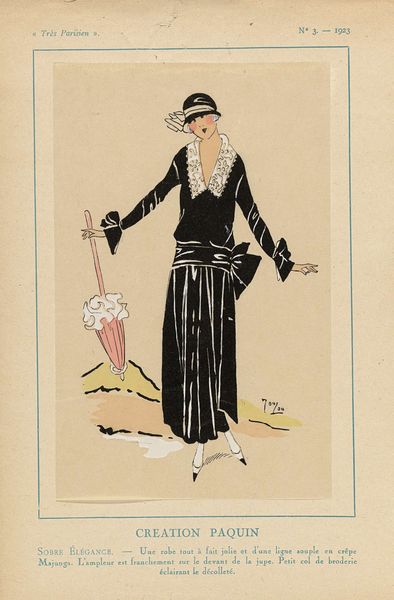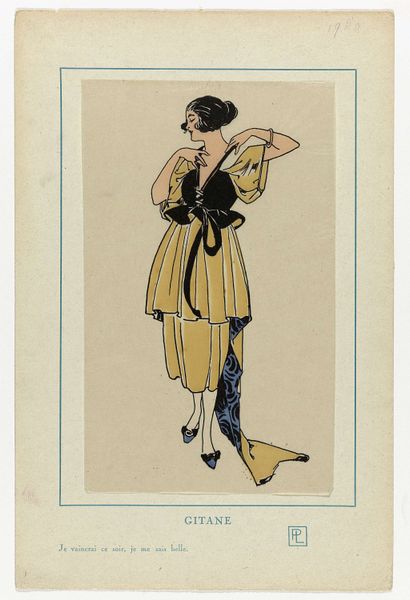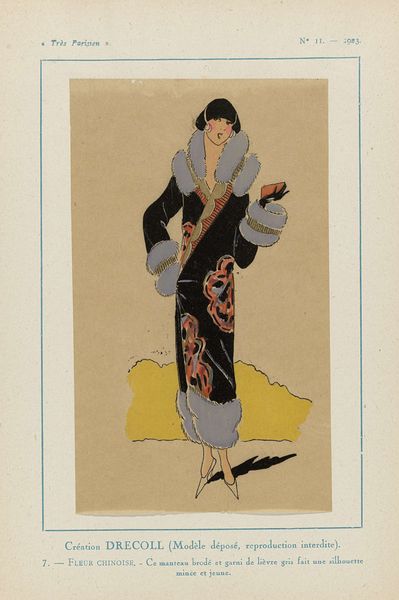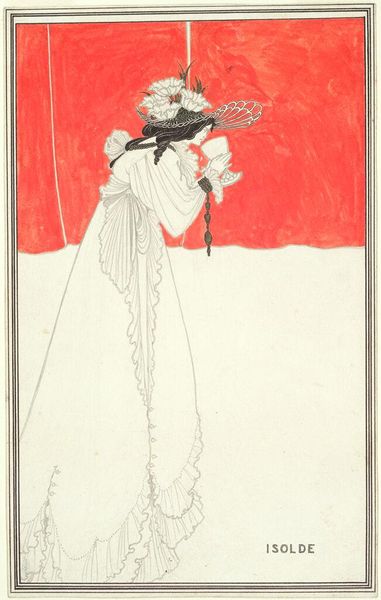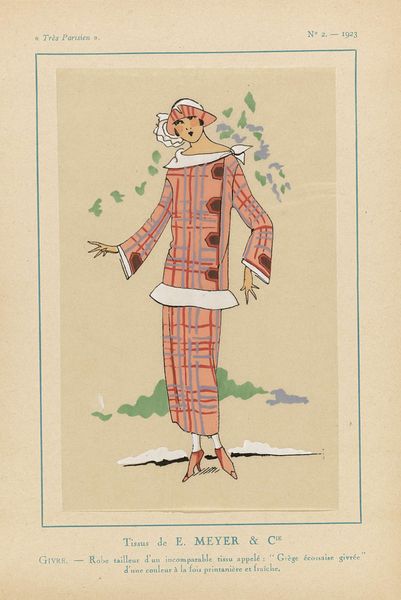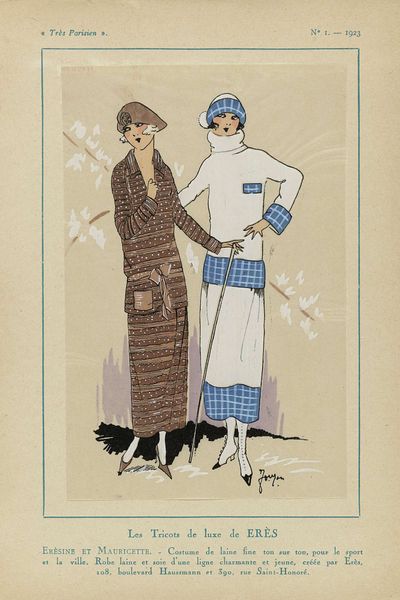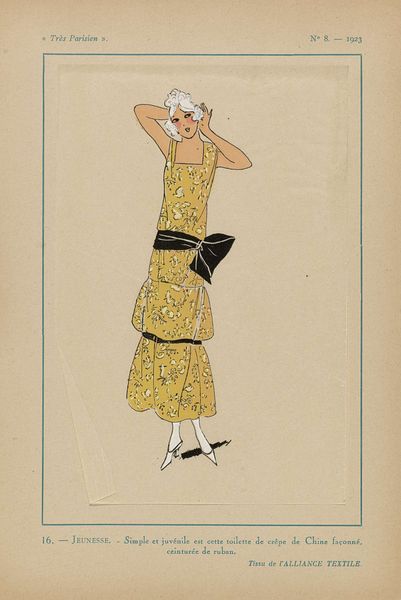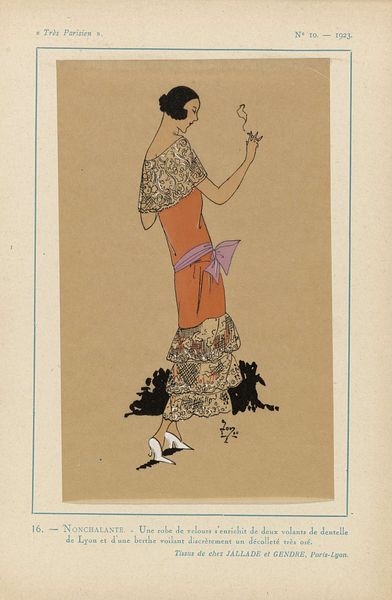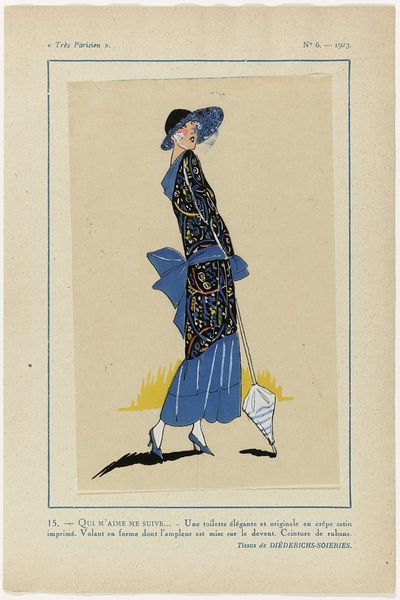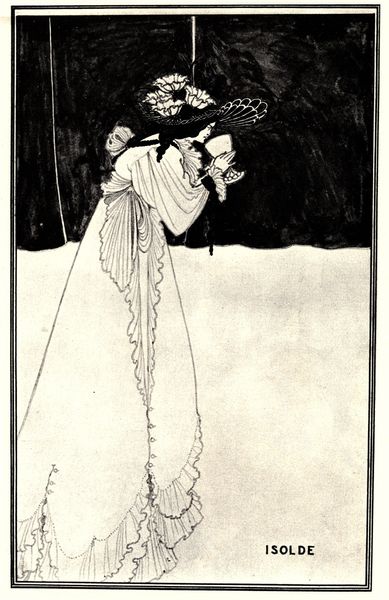
drawing, print
#
portrait
#
art-deco
#
drawing
# print
#
decorative-art
Dimensions: height 269 mm, width 180 mm
Copyright: Rijks Museum: Open Domain
Editor: This is "Très Parisien. La Mode, Le Chic, L’Élégance," a print from 1923, artist is listed as Anonymous and is currently housed in the Rijksmuseum. I find the stylized rendering of the woman and the fashion so striking, so geometric. How would you interpret this work? Curator: The print certainly embodies the Art Deco spirit, but look closely at the symbols at play. Consider the woman herself – posed, aloof, adorned in fur. The image vibrates with the symbolic power of Parisian chic, reflecting aspiration and an almost ethereal grace. It’s as though she embodies the *idea* of elegance, rather than a specific person. Editor: So, you're saying the image operates more as a symbol of fashion than just a picture of clothing? Curator: Precisely! Notice how the print uses a visual language, almost hieroglyphic, where the sleek lines, the repeating patterns on the coat, the precisely placed plant—all contribute to the overarching message of Parisian style. It's designed to communicate status and sophistication in a single glance, feeding a collective dream. Consider the lasting power of these images: do they echo in fashion imagery today? Editor: Absolutely, I can see that echo now. This idealized, almost unattainable, version of elegance is everywhere. Thanks, I hadn't considered the psychological weight carried by these images of fashion. Curator: My pleasure, that's how we see how visual memory works over time.
Comments
rijksmuseum about 2 years ago
⋮
Très Parisien promoted itself as chic and elegant. Between 1920 and 1936 it presented creations by such couturiers as Chéruit, Premet, Philip et Gaston, and Lanvin. The young, svelte models are all ultra-modern, shown talking on the phone, smoking and playing tennis. The illustrations also show that over the course of the 1920s, skirt lengths had risen to just below the knee, before dropping back down to calf length in the 1930s. The small plates were printed on transparent paper using a stencilling technique known as en pochoir and then hand coloured; many of them are unsigned. The signature ‘Joujou’ belonged to Germaine Paule Joumard, who was the director of Très Parisien, as well as one of the magazine’s illustrators.
Join the conversation
Join millions of artists and users on Artera today and experience the ultimate creative platform.
